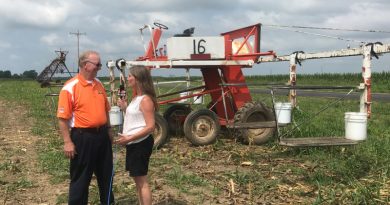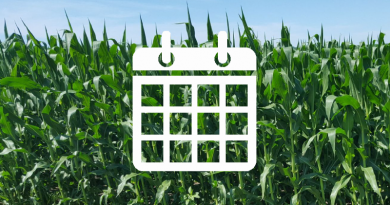Phosphate & Potash for 2023
Heading into 2023, fertilizer costs remain high, leading to many looking for ways to maximize ROI on management costs. Some dialed back phosphorus (P) and potassium (K) rates last year, making another year of high fertilizer prices a challenge. With areas experiencing dry conditions in 2022, potash deficiency was prevalent in many soybean and corn fields. In this article, I’ll cover the roles P and K play in plant growth and ways to address management for the next growing season.
Role of Phosphorus
Phosphorous is immobile in the soil, making plant uptake related to root growth. Roots must directly intercept soil P for uptake and form symbiotic relationships with fungal mycorrhiza. This helps the plant intercept soil P several times beyond the root zone. Cold, wet, and compacted soils lead to reduced P adsorption. Phosphorus handles energy storage and transfer in plants. It is a key component of chlorophyll which converts sunlight into sugars for the developing plant. In corn, P deficient plants will appear purple and in soybeans, plants will be dark green and short.
Role of Potassium
Potassium has limited mobility in the soil and moisture conditions are responsible for uptake. Under dry conditions, K deficiency can become more pronounced since it cannot move in the soil solution to roots. Potassium deficiency can especially reduce stalk strength and quality as it is a key component of the cell wall structure providing plant rigidity. It is important in stomata regulation, which controls plant water relations. Deficiency symptoms are noticed on older leaves because it is mobile in the plant. Lower leaf margins often turn yellow and then become necrotic. Deficiency symptoms can be more severe under dry conditions, especially on field edges, due to decreased fertilizer coverage and competition from perimeter vegetation.
Soil Testing
Soil testing is the starting point and most cost-efficient tool for managing fertilizer costs. If you haven’t had a soil test within the last 3 years, now is the time to get updated results to align with your yield goals. When it comes to phosphate soil test results, there are many tests available, but we’ll cover the most common ones conducted. Weak Bray (P1) provides an estimate of plant available P in the soil profile. Strong Bray (P2) offers an appraisal of total P present in the soil. If there is a significant difference between P1 and P2 results, you might have P tie-up if your pH is outside of the range of 6.3 to 7.3. If your soil pH is towards 6.0, investing in lime to raise your pH may be more beneficial than applying more P to facilitate a yield response. Both Bray tests offer the most accurate estimate of soil phosphorous when the pH is below 7.0, but the Olson Bicarbonate test provides a better estimate of soil P when pH is alkaline.
Soil potassium tests are straightforward when it comes to interpreting their analysis. If your soil test is showing moderate or optimum level, you have breathing room for managing into the future. However, if you’re testing low or below optimum, additional phosphate and potash needs to be applied. Even at today’s high fertilizer prices, you will almost always get a positive net return by following the suggested recommendations for your specified yield goals. If you’re in the moderate range, you can fertilize based on crop removals or reduce rates slightly going into the next year. However, the caveat remains that if you borrow from the soil, you need to pay it back!
Crop Removals
Understanding your crop removals based on yield history can help dial in how much to apply. There are many places or apps where you can look up nutrient crop removal. One I like to use is the Nutrient Removal Calculator available through the International Plant Nutrition Institute (IPNI). By plugging in yield history, you can get an idea of necessary P and K application amounts. A key note is that removal rates are an excellent guide to use when replacing fertility; however, if your soil tests show you’re in the low range, the amounts suggested will not be enough to sustain the crop and deficiency symptoms may still occur.
While each year is unique and presents its own set of challenges, sticking to the fundamentals and staying disciplined can pay dividends. If you need help interpreting your soil test or creating a nutrient management plan for the upcoming year, please contact your Burrus Representative.
article written by: Dana Harder, CCA – Burrus Seed Field Agronomist






